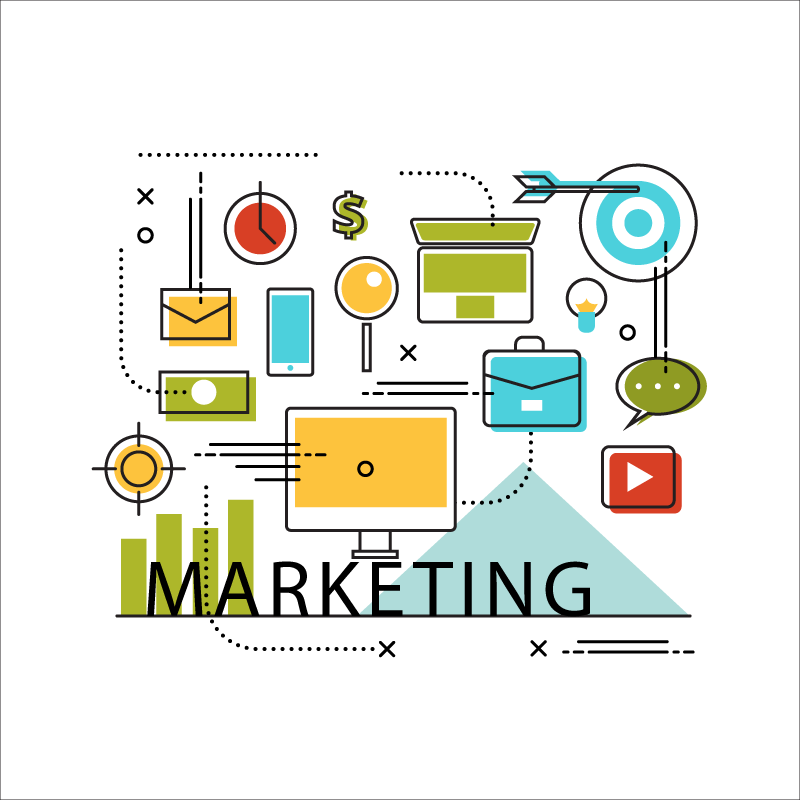The father of marketing, Peter F. Drucker, once said, “The art of marketing is to know and understand the customer so well that the product or service fits him and sells itself.”
Marketing is a bundle of activities a company performs to promote the sales of a product or a service. It is a misconception that marketing is all about talking in tongues. It is true, but it is also about having a deep understanding of what a consumer needs. Think of all the great inventors. Somehow, they had that understanding and finetuned their products for the people. The New York Times had wonderfully described the term as “the art of telling stories so enthralling that people lose track of their wallets”.
Brand Awareness
Let’s play a small game. Keep track of the first brand that comes to your mind when you see the following categories.
-
- Washing powder?
- White glue?
- Electric Vehicles?
Chances are your answers were Nirma, Fevicol and Tesla, respectively. We are more likely to buy a product when we know about the options in a product category, brands in the category, and occasionally, by the name of a brand. Brand awareness is the extent to which a customer can recognise a brand. It’s a crucial part of the decision-making process before purchasing. In addition to just informing what a product or a service does, brand awareness achieve when customers know that it will sate their needs.
Aided awareness- The customer sees a list of products in the same category and recognises a brand.
Top of mind awareness (Immediate brand recall)- The customer recalls the brand when a product category is mentioned.
Content marketing
Swiggy has a huge follower base on their social media. Despite being a food delivery app, almost none of their content is explicitly marketing it. Over the years, they won the loyalty of thousands of Instagram users for the witty content they consistently post online. That ladies and gentlemen is content marketing. It is an art of marketing model that aims to create content that is relevant and consistent and will be shared by a defined audience, which will eventually create more profitable customer action. Rather than pattering on about your product and services, you provide useful content to prospective customers that help them with their problems by doing good content marketing. Eventually, it comes naturally to a consumer to refer to your brand since they would remember.
The brand would offer such good information that a consumer would become loyal to it. Even if it is Search Engine Optimisation or Pay Per Click campaigns that your brand is running, only original quality content will give optimum results.
KPI
Traditional marketing campaigns don’t exactly give us measurable results. Marketing teams use them to track and measure the performance of their marketing campaigns. It has enabled many tools that help promote their brands, and overall tracking of these tools can be very time-consuming. But the biggest perk that comes with digital marketing is the numbers. Every single action performed in digital media can measure into quantifiable numbers. Digital marketing is a brilliant tool that shows how much money was spent at every step of a strategy and how well it is performing and what ROI one can be expected. These measurable numbers are KPIs or Key Performance Indicators. Making specific KPIs makes it easier to fix targets and check campaign performance based on those numbers. Key Performance Indicators (KPIs) help you see the big picture and evaluate your strategies to adjust them better.
Even for the most experienced marketing professionals, there are things about the field that would be left unexplored. Just like everything else in the world, art of marketing grows in its vastness every day. Before starting a new project, the marketers must remember that they must accommodate these factors into its strategies to get the best possible results.
-
Content that rocks the world
06 November, 2020 -
Design: Bringing Ideas to Life
12 November, 2020 -
Whassup Bud: One of Budweisers’ Evergreen Television Ad Campaign
20 November, 2020 -
Brands must be Gods
27 November, 2020 -
The Deffective Dictionary
08 January, 2021






